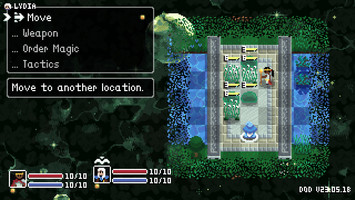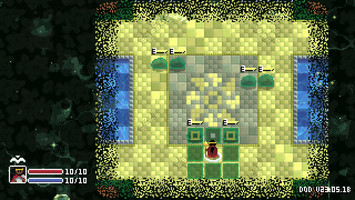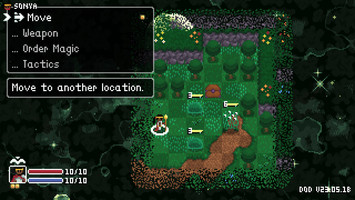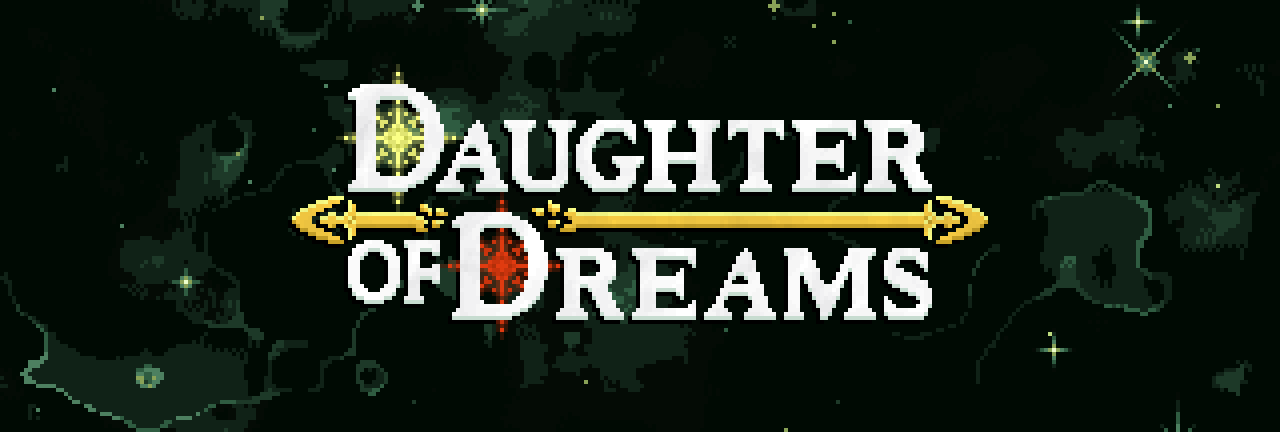Why the player heals after every battle.




This is the first of a series of blog posts where I plan to cover some of the design decisions I made for my tactical RPG Daughter of Dreams and my reasoning behind them. I hope this provides some insight, and perhaps sparks some conversation!
Duran artwork by HoneyshuckleEX.
Introduction
In many RPGs, damage taken in battle persists between battles. This approach introduces resource management, where health (HP) and energy (like MP) must be spent carefully, and items or rest points are used to heal outside of battle. This builds a creeping tension as the player explores dangerous areas where they might run out of healing resources, leading to their unprepared demise.
The Problem
Personally, I hate it. To me, this approach is more obnoxious than engaging, and there are a few reasons for that...
- When the player has enough items, the sustained damage is a non-issue. They can just heal to full between every fight. Many games include an "auto-heal" option that spends the potions for you! There is no tension to this.
- When the player runs out of items, they have no choice but to turn back. This is especially a problem in RPGs where damage can be mitigated, but not prevented. This is needlessly frustrating, and also rewards grinding for more XP or items.
- This dependency on healing disproportionally affects less experienced players, who are more likely to take damage in the first place. The game can feel oppressive for new players and trivial for experienced players!
My Approach
In Daughter of Dreams, the players' HP and MP are fully restored after every battle instead. There are still healing items, but they are only used during battles.
- This eliminates unnecessary backtracking to heal or get more items. It also strips out a layer of bothersome item management and any auto-heal feature.
- Because MP is restored between battles, players are empowered to use their most powerful (and exciting) abilities for every fight. Hordes of minions can be wiped out with expediency, and the player still has MP for boss fights.
- Battles can be designed around a player with a full HP and MP bar. This helps the difficulty to be more consistent and reduces the chance of a player getting stuck somewhere without enough items to make progress.
Friendly-Fire
Healing between battles has another dramatic and unexpected consequence for Daughter of Dreams. When all damage is temporary, and any attack can hit any location on the battlefield, friendly-fire becomes a viable strategy. This is especially true in the case of poor Duran, a "blood mage" character who casts spells with his own HP and can Lifelink to share damage with others.
For example, Sonya might hit an ally to gain extra charge from Dynamic Slash. Then, Duran might Lifelink with an enemy to act as a conduit for Sonya's Charged Strike to hit several enemies for massive damage. This may have grim implications for the story, but it enables many new clever strategies. Friendly-fire is something I've accepted as part of the game, and intend to develop further in the future.
Downsides
Healing between battles has some downsides though. It shifts the focus from entire areas down to a single battle. There are lower stakes for losing, which means I need to build tension in a different way. I try to make each fight engaging on its own, and dangerous enough to require the player to use their most effective strategies. But, the lower tension can also be a good thing, as Daughter of Dreams focuses more on exploration and aims to be approachable for new players.
The biggest downside to healing between battles is consumable items. Many games with consumables deal with the "hoarding problem", but when the player recovers between every battle there is even less reason to use those precious single-use healing items. The hoarding problem deserves a blog post of its own, but I have not bested it yet.
Other Solutions
The hoarding problem is tied directly to healing. One approach to both is reusable healing, such as the iconic Dark Souls Estus Flask. Souls games build incredible tension as the player is constantly one mistake away from death. Every single flask could be needed to stay alive. Then, there is a breath of relief when you instantly refill your healing by reaching a safe point.
In contrast, Xenoblade Chronicles heals the party between battles and does away with consumable items entirely. Their abilities rely on cooldowns instead of MP. Without healing items, there can be no hoarding problem and every battle must be tackled in isolation. This approach could work for Daughter of Dreams, but I already added consumable items and I'd rather rework them to serve a more prominent role.
Final Thoughts
Thanks for reading! Please, leave a comment telling me about other approaches to healing in general, or consumable items specifically. Also, feel free to ask questions or propose other topics I might cover regarding Daughter of Dreams.
The game is currently in beta, you can play it here!
Get Daughter of Dreams: Chapter One
Daughter of Dreams: Chapter One
Epic fantasy tactical RPG with an ever-changing world.
| Status | On hold |
| Author | Cloaked Games |
| Genre | Role Playing, Adventure |
| Tags | Fantasy, JRPG, Pixel Art, Procedural Generation, Story Rich, Tactical RPG, Turn-based |
| Languages | English |
| Accessibility | Configurable controls |
More posts
- Bug Fixes and Difficulty Options! (v24.01.0b)Jan 04, 2024
- FINAL BETA - Original SoundtrackJul 16, 2023
- BETA - Daughter of Dreams: Chapter OneJun 11, 2023

Leave a comment
Log in with itch.io to leave a comment.